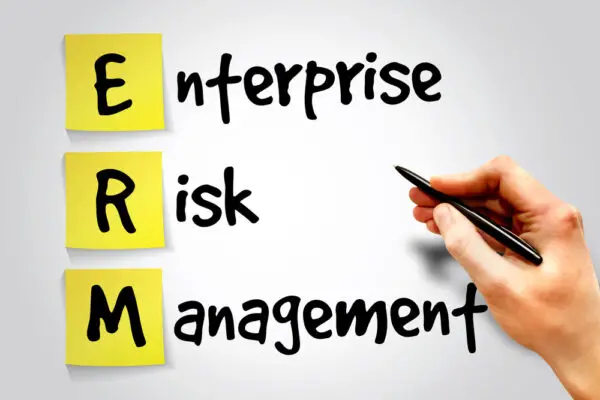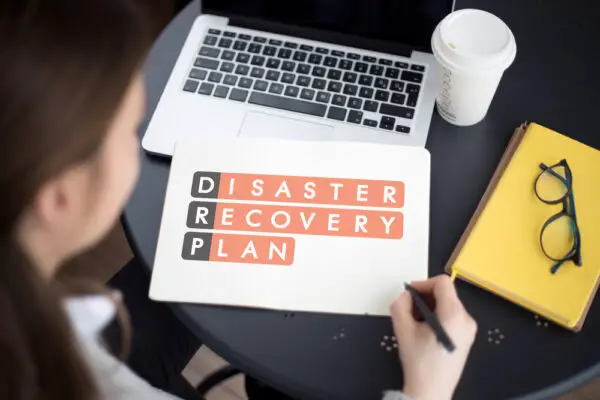Natural disasters can devastate communities and individuals, causing loss of life, destruction of property, and significant economic impacts. In response to these risks, many countries have implemented disaster risk management policies and plan to reduce the impact of natural hazards.
New Zealand is one such country that has taken a proactive approach to national disaster risk reduction. New Zealand’s approach focuses on reducing risk at the community and personal level, identifying and prioritizing risk-reduction activities, and providing guidance and information to the public.
The central government, national professional bodies, organizations, lifeline utilities, and network providers all contribute to risk reduction outcomes.
The Risk Reduction and Resilience Team advocates for natural hazard damage reduction while actively engaging with public and private stakeholders.
This article will examine New Zealand’s policy framework for disaster risk management, including funding mechanisms and contributors to outcomes such as stakeholder engagement strategies.
Key risk reduction activities undertaken by the government or other social actors like NGOs or volunteer groups; identify tools available for preparedness planning such as maps or tracking software; discuss future directions for research in this field based on current trends observed globally.

Policy and Funding
Policy and funding are essential in achieving national risk reduction outcomes, as they establish priorities and guide practitioners while supporting local government, businesses, and individuals.
Effective governance structures ensure that policies are implemented efficiently. Stakeholder engagement is also vital to ensure that all parties involved have a say in determining the direction of risk management initiatives.
Budget allocation is crucial for disaster risk management because it determines how much funding will be available for risk reduction activities. Funding sources can come from sectors such as central government, national professional bodies, organizations, departments, state-owned enterprises (SOEs), lifeline utilities and network providers.
The allocation of funds must consider the prioritization of identified risks and vulnerabilities.
The success of policy implementation relies on a collaborative effort between stakeholders across different sectors. There must be effective communication channels between policymakers and those responsible for implementing policies to ensure that objectives are met efficiently.
In addition to stakeholder engagement, monitoring and evaluation mechanisms must be put in place to assess the effectiveness of policy implementation over time.
Contributors to Outcomes
Contributors to successful outcomes in reducing the impact of hazards and vulnerabilities include various government departments, national organizations, lifeline utilities, and network providers.
These contributors work together to identify risks, establish priorities, fund research, and guide practitioners and the public.
Central government bodies like the Ministry of Defence and New Zealand Defence Force have proactively promoted global recognition of climate change impacts. They also collaborate with organizations such as the United Nations Office for Disaster Risk Reduction – Regional Office for Asia and Pacific.
Lifeline providers play a crucial role in disaster risk management by addressing risks associated with their services. National lifeline engineering planning groups recognize inter-dependencies between different sectors that can impact service delivery during disasters.
Additionally, social education and health services are important components of reducing vulnerability at the community level. Such measures contribute significantly towards building resilience against natural hazards.
Inter-sector collaboration is essential for effective disaster risk management. Different sectors have practitioners working to reduce risk from natural disasters using their expertise specific to their areas of interest or involvement.
Collaboration ensures that different perspectives are brought together, effectively leading to more comprehensive approaches towards managing disaster risks.
Public education is another significant aspect as it ensures communities understand how to minimize their vulnerability through preparedness actions like preparedness response planning by understanding hardscape while being aware of available resources.
Risk Reduction Activities
One crucial aspect of reducing the impact of natural hazards in New Zealand is developing a comprehensive understanding of the country’s hardscape, identifying and prioritizing risk reduction activities, and implementing readiness, response, and recovery planning.
This involves community involvement in hazard identification to understand different regions’ unique risks. It also involves infrastructure planning to ensure that critical lifelines such as electricity, water supply, and transport are designed to withstand potential hazards.
Vulnerability reduction is another important activity in disaster risk management. This can be achieved through social, educational, and health services that reduce people’s susceptibility to hazards.
For instance, educating people on preparing for an earthquake or flood can help them reduce their vulnerability during such events. Additionally, capital infrastructure can be risk-proofed by designing resilient buildings against specific types of disasters.
Overall, disaster resilience should be a key focus in risk reduction activities. Disaster resilience refers to the ability of communities and systems to recover quickly from disasters while maintaining essential functions.
The government funds hazard and risk reduction activities to enhance disaster resilience across different sectors, such as healthcare facilities and educational institutions. By prioritizing these activities, New Zealand can build a more resilient society better prepared for future natural disasters.
Tools and Resources
Tools and resources are crucial in supporting New Zealand’s efforts to reduce the impact of natural hazards. These options include hazard mapping, climate adaptation, disaster preparedness, risk reduction strategies, and community resilience.
For instance, new maps provide detailed information on places at risk from sea-level rise in New Zealand. Photovoice methodology for disaster preparedness has been reviewed to enhance community engagement and participation in reducing the impact of natural hazards. Additionally, a tool has been developed to track deadly eruption hazards in New Zealand.
To further improve national disaster risk management, organizations such as the National Institute of Water and Atmospheric Research (NIWA) and the Asian Disaster Preparedness Center (ADPC) provide valuable tools and resources for decision-making processes.
NIWA focuses on research that supports risk assessment and management by providing data on weather patterns and climate change projections. The ADPC offers training programs that equip stakeholders with the skills to develop community resilience plans based on their local context.
Access to reliable tools and resources is critical for effective disaster risk management. With technological advances, such as mapping systems, we can expand our knowledge base on natural hazards while enhancing our ability to mitigate their effects through informed decision-making processes.
Thus, it is important for organizations involved in national disaster risk management efforts to invest in research that informs policy development while partnering with stakeholders at all levels to enhance community resilience against natural disasters.
| Tool/Resource | Purpose | Organization |
|---|---|---|
| Hazard Mapping Systems | Provides detailed information about areas prone to various types of natural disasters such as earthquakes or floods. | GNS Science |
| Climate Adaptation Tools | Provides data-driven solutions for adaptation planning based on current climate trends. | Ministry for Environment |
| Disaster Preparedness Training Programs | Equips stakeholders with the necessary skills required during emergencies. | Asian Disaster Preparedness Center |
| Risk Reduction Strategies Reports | Provides recommendations for mitigating risks associated with natural hazards. | Resilience to Nature’s Challenges |
Future Directions
Advancements in technology and research are paving the way for more effective approaches to reducing the impact of natural hazards on New Zealand communities.
Innovative approaches such as predictive analytics, machine learning, and artificial intelligence are being used to develop more accurate hazard models and early warning systems. These technologies provide real-time data on changing weather patterns, seismic activity, and other factors that can help predict when a natural disaster might occur.
Emerging technologies such as drones, virtual reality simulations, and geographic information systems (GIS) are also being utilized to improve disaster response efforts. Drones equipped with cameras can quickly assess damage in hard-to-reach areas after a disaster strikes.
Virtual reality simulations provide emergency responders with realistic training scenarios that prepare them for different disasters. GIS mapping technology enables authorities to quickly identify at-risk areas and allocate resources accordingly.
Community engagement and capacity building are crucial components of effective disaster risk management. Stakeholder collaboration is necessary for developing comprehensive risk reduction strategies that address the unique needs of different communities across New Zealand.
By involving community members in these processes, authorities can ensure that their plans reflect the concerns and priorities of those most affected by natural disasters.
This approach also helps build trust between authorities and community members, which is essential for effective response efforts during times of crisis.
Emerging technologies provide new ways to manage natural disasters in New Zealand, while community engagement remains an important part of any successful disaster risk management strategy.
By combining innovative approaches with stakeholder collaboration and capacity-building efforts, local authorities can better prepare their communities for potential emergencies while minimizing the impact of natural hazards on people’s lives.
As technology continues to evolve alongside our understanding of how best to respond to these challenges, there is reason to be optimistic about the future of disaster risk management in New Zealand.

Frequently Asked Questions
What are the specific hazards that New Zealand faces, and how are they being addressed in national disaster risk management policies?
Assessing hazards in New Zealand involves identifying and prioritizing risk reduction activities, readiness, response, recovery planning, and social and health services to lessen vulnerability. The government funds mitigation strategies focusing on disaster resilience and risk communication.
How are communities and individuals being educated and empowered to reduce their vulnerability to natural hazards?
Community engagement, risk communication, and capacity building are essential for disaster preparedness and resilience.
Individuals and communities are empowered through education on hazard awareness, emergency planning, and adopting risk reduction measures to reduce their vulnerability to natural hazards.
What role do private sector businesses play in national disaster risk management efforts?
Private sector businesses play a crucial role in disaster risk management efforts through public-private partnerships. They contribute to risk assessment, emergency response planning, and financial preparedness, ensuring business continuity during disasters.
How does New Zealand collaborate with other countries and international organizations to address global disaster risk reduction?
New Zealand collaborates with international partners and organizations to address global disaster risk reduction through sharing best practices, disaster response training, risk assessment strategies, and funding resources.
This is achieved through initiatives such as the Asian Disaster Preparedness Center and the United Nations Office for Disaster Risk Reduction.
What steps are being taken to ensure that disaster risk management policies and practices are equitable and accessible to all members of New Zealand society, particularly marginalized and vulnerable populations?
Equity measures are being implemented to ensure that New Zealand disaster risk management policies and practices are inclusive and accessible to marginalized and vulnerable populations.
This involves the development of inclusive policies, targeted information dissemination, and accessibility initiatives.

Conclusion
New Zealand’s national disaster risk management policies and plans are focused on reducing risk at the community and personal level, identifying and prioritizing risk reduction activities, and providing guidance and information to the public.
The country has developed tools and resources to help individuals and organizations prepare for natural hazards, such as maps and tracking tools.
The Risk Reduction and Resilience Team advocates influences, and implements the reduction of natural hazard damage, engaging with stakeholders across the public and private sectors.
Central government, national professional bodies, organizations, lifeline utilities, and network providers all contribute to risk reduction outcomes.
New Zealand’s approach to disaster resilience is commendable in its comprehensive coverage of various aspects that can come into play during a crisis.
However, future directions should focus on strengthening community participation in decision-making processes regarding disaster response strategies.
In addition to this, efforts towards enhancing citizen engagement would be devising ways to manage environmental degradation better while ensuring sustainable development practices since climate change exacerbates natural disasters’ impact.
Overall, New Zealand has developed an effective system for addressing disasters that can serve as a model for other countries looking to improve their own approaches.

Chris Ekai is a Risk Management expert with over 10 years of experience in the field. He has a Master’s(MSc) degree in Risk Management from University of Portsmouth and is a CPA and Finance professional. He currently works as a Content Manager at Risk Publishing, writing about Enterprise Risk Management, Business Continuity Management and Project Management.

